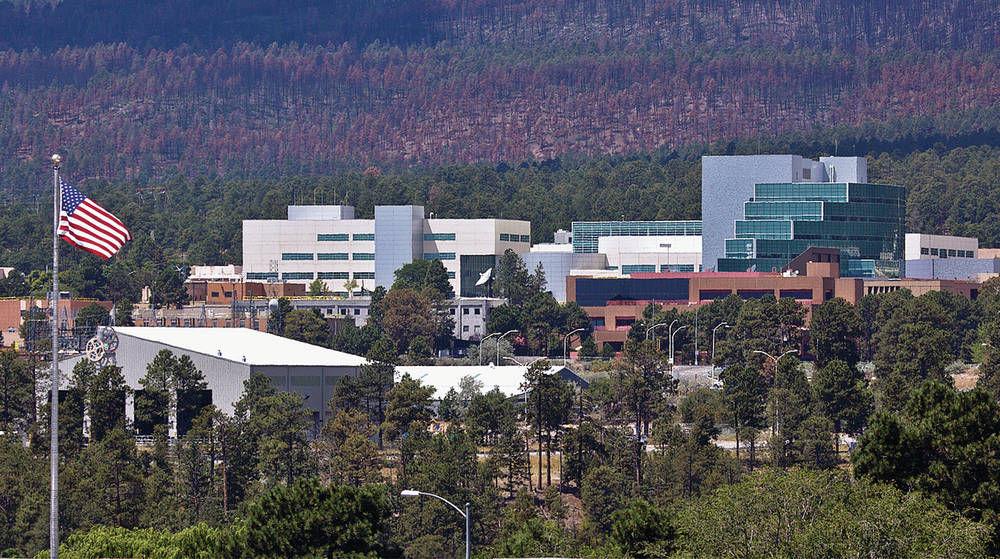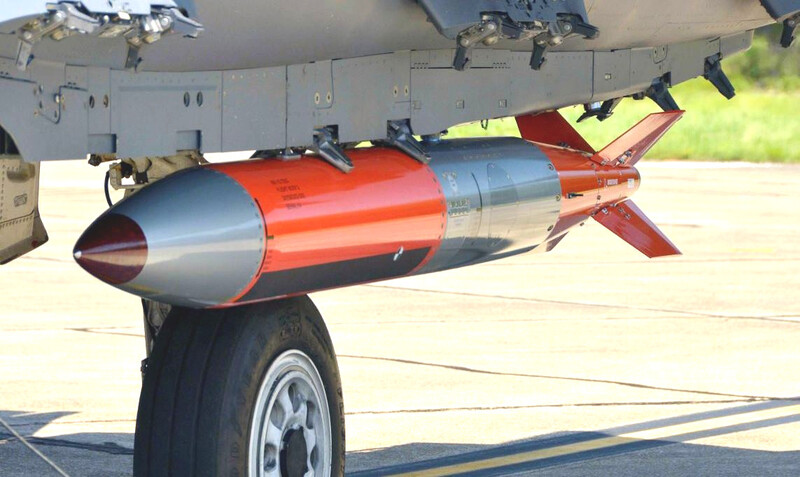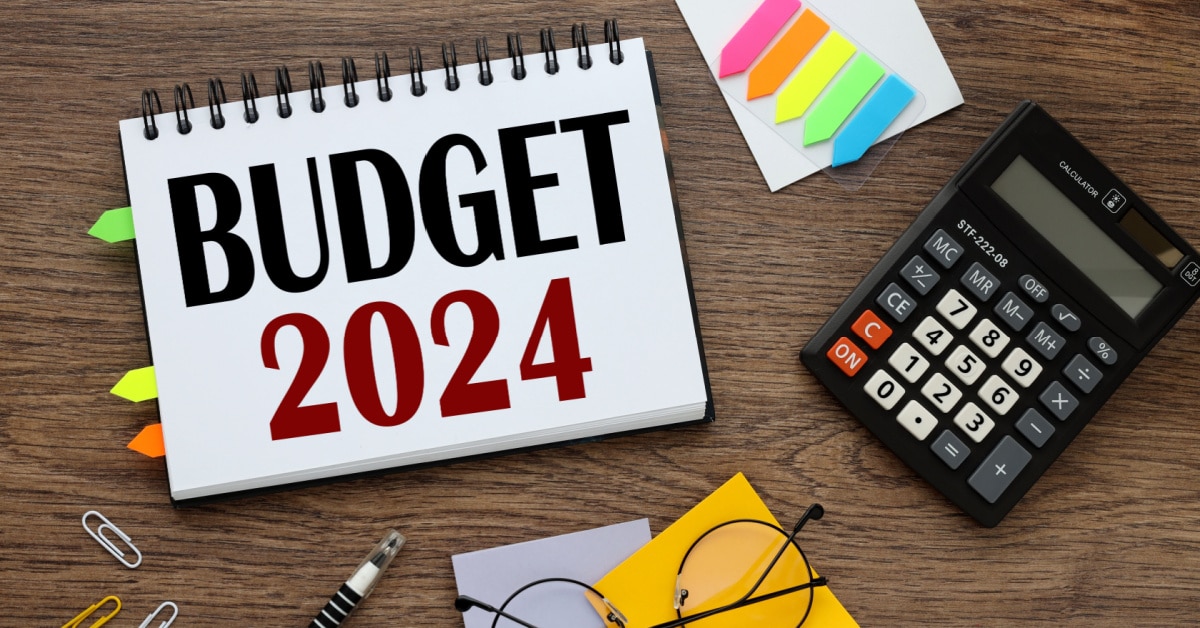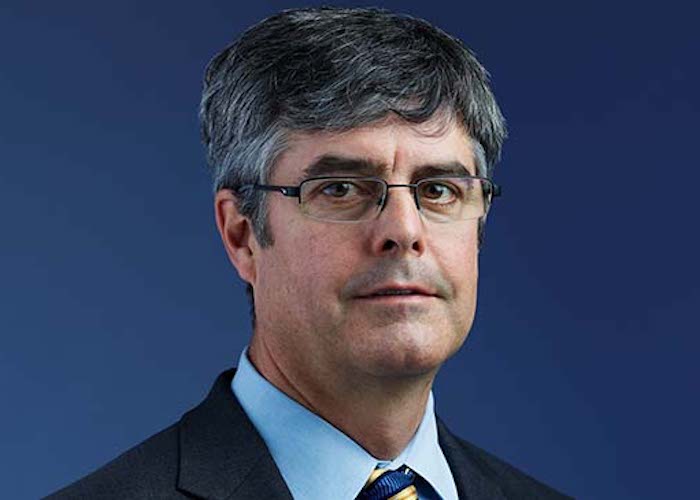
The Los Alamos National Laboratory.
Huge Increase in Nuclear Warhead Funding
Set for 2023; More Funds Requested for 2025
Greg Mello / Los Alamos Study Group
Summary:
- Two new warhead designs are now approved and funded on top of the five previously underway.
• Scope of other warhead work increasing as well
• Biden warhead request claims future-year costs willdeclinein real terms, despite all this additional work
• Meanwhile worker shortages and construction challenges are leading to widespread cost, schedule overruns
• Proposed DOE cleanup budget flat; at Los Alamos National Laboratory (LANL) a 15% cut is proposed
• LANL to be a $5+ billion lab if budget is approved; 5,000 additional workers hired in past 5 years with more to come,
• LANL seeking new campus in Santa Fe
• Pit production is said to be more costly than last year and is further delayed, involves more sites, and grows mysterious

ALBUQUERQUE, NM (March 12, 2024) — Today the Department of Energy (DOE) released most of its congressional budget request (CBR) for fiscal year (FY) 2025, including its proposed budget for DOE’s semi-autonomous sub-agency the National Nuclear Security Administration (NNSA). (See our NNSA planning and budgeting page for more FY25 CBR tables, requests, and related planning documents).
But first, the Energy and Water Development
and Related Agencies Appropriations Act
Four days ago, Congress passed (and the President subsequently signed) the FY24 Energy and Water Development (EWD) Appropriations Act (explanatory statement with funding levels), which funded DOE (including NNSA) for the current fiscal year.
The FY24 EWD funding bill raised the funding level for NNSA Weapons Activities (WA) from $17.116 billion (B) in FY23 — which up to this week had been the continuing resolution funding level for this and other NNSA programs — to $19.108 B, a $2.0 B, 12% increase.
This is the second-biggest percentage increase in US warhead spending since 1982, when the Reagan Administration increased warhead spending by 19% in a single year. This year’s increase is exceeded only by the Trump/Biden increase of 15% in 2021.

The B61-13 Gravity Bomb
The bill included $52 million (M) for the proposed B61-13 gravity bomb, a high-yield, precision-guided earth-penetrator, authorized for the first time in December of last year. This bill funds the B61-13 under its own name for the first time.
The bill adds $70 M for work on a version of the W80-4 warhead for the nuclear-tipped Sea-Launched Cruise Missile (SLCM-N), which would be fielded in the early 2030s if the program continues to completion.
With these two new warhead projects, NNSA’s warhead development and production portfolio has expanded from five — already a heavy load — to seven so-called “Life Extension Programs” (LEPs).
Regarding plutonium warhead core (“pit”) production, NNSA’s largest program by far, Congress added $142 M over the administration’s request for the Savannah River Plutonium Processing Facility (SRPPF), a plus-up also authorized by the armed services committees in the FY24 National Defense Authorization Act (NDAA).
Last week’s bill requires a study of pit aging (see p. 86 in the explanatory statement linked above). Just such a study was discussed in a recent report of the Government Accountability Office (GAO). The decade-long study that is planned will cost at least $1 B, not counting at least $2.6 B in new and upgraded infrastructure. The results of this study will come too late to affect current pit production plans.

Now Comes NNSA’s FY25 CBR
The Administration is proposing a 4% increase in Weapons Activities over the appropriated FY24 level — that is, a 16% increase over 2 years.
Despite NNSA’s increasing workload, after FY25 proposed annual increases in WA are supposed to continue at 4% for a year (until FY26), then decline to 3% for two years (through FY28), then decline further to 2% by FY29.
From FY30 to FY2034, the Administration expects WA increases to be just 1% per year, far below any reasonable inflation expectations for NNSA’s work, or NNSA’s own cost inflation history. In other words, absent some further convincing explanation or policy change, this is not a realistic budget for the out-years.
We have updated this historical chart of US warhead spending. In it, you can see (among other things) the unprecedented “budget breakout” that began in the second Obama administration, which continues unabated. The break in upward slope shown for years past FY25 would be much greater — indeed the future-year WA line would turn downward — under any reasonable inflation assumption.
As can be seen throughout NNSA’s proposed budget, construction challenges and worker shortages are taking a toll on NNSA’s construction projects.
DOE’s Defense Environmental Cleanup budget would remain about flat in DOE’s budget (DOE summary, p. 1; Environmental Management budget details). In other words, DOE’s cleanup budget will fall in real terms unless Congress adds more funding, as lawmakers have done in similar situations before.
At Los Alamos National Laboratory (LANL) the cut in cleanup is particularly steep, a proposed 15%.
NNSA sites do work for agencies other than DOE (called “Strategic Partnership Programs”), which does not appear in DOE’s budget requests. At LANL, the most recent figure for SPPs that we have is for FY22, when SPPs were $340 M. For FY25, DOE is proposing a $4.865 B budget for LANL, not including $23.35 M for federal salaries and expenses at the Los Alamos Field Office or SPPs. With these included, LANL is about to be a $5 B lab if Congress approves this budget.
We have updated this interesting historical chart of LANL spending in constant dollars. The early years were supplied by LANL; the later years come from DOE laboratory tables. The enormous spending jump in 2021 is largely if not entirely explained by LANL’s pit production mission.

LANL Director Thom Mason
5,000 New Hires in the Past Five Years
On January 31, LANL Director Thom Mason stated in a speech we attended that LANL had already hired a net 5,000 additional staff in the past five years, was seeking an additional campus, and was looking for one on the south side of Santa Fe (and presumably elsewhere). This was confirmed to us later by the Los Alamos Field Office Manager Ted Wyka. According to LANL, pit production at LANL will require about 4,100 full-time employees.
Astute readers will find an unusual number of interesting details in this budget request, too many to cover in today’s press release.
The pit production program is no exception. We learn for example that NNSA seeks to use the Device Assembly Facility (DAF) at the Nevada National Security Site (NNSS) for material staging to support pit production at LANL, along with pit certification activities overseen by Lawrence Livermore National Laboratory (LLNL) (pp. 195, 199).
We learn that the expected cost of the Los Alamos Plutonium Pit Production Project (LAP4) has increased by $720 M and its estimated completion date has been extended to FY2032 (p. 231), a date NNSA had already supplied to GAO last August.
NNSA now hopes to achieve a 30-pit-per-year (ppy) production “capability” at LANL by 2028. This is not saying that NNSA expects LANL to produce 30 War Reserve pits in 2028. Meanwhile construction and installation of the 30-ppy “base” equipment set will not be complete until 2030.
Two ongoing LANL construction projects, the Transuranic Liquid Waste Facility (TLWF) and the remainder of the Chemistry and Metallurgy Research Replacement (CMRR) project, need no additional funding in FY25 to proceed and will be funded with carryover balances. The most likely reason for this is that LANL may have not been able to find enough skilled workers to use the funds Congress has supplied for these projects.
Of potentially much greater import, and deeply mysterious so far, NNSA tosses out the remark (on p. 271) that the cost of SRPPF might rise to as much as $18-$25 B, i.e. roughly double its present $11.1 B estimated cost.
Comments from us on these and other aspects of this budget request are available upon request, as time does not allow that here. Prior analysis and references regarding pit production at LANL and SRPPF can be found here.
Greg Mello
Los Alamos Study Group
2901 Summit Place NE
Albuquerque, NM 87106
505-265-1200 office
505-577-8563 cell